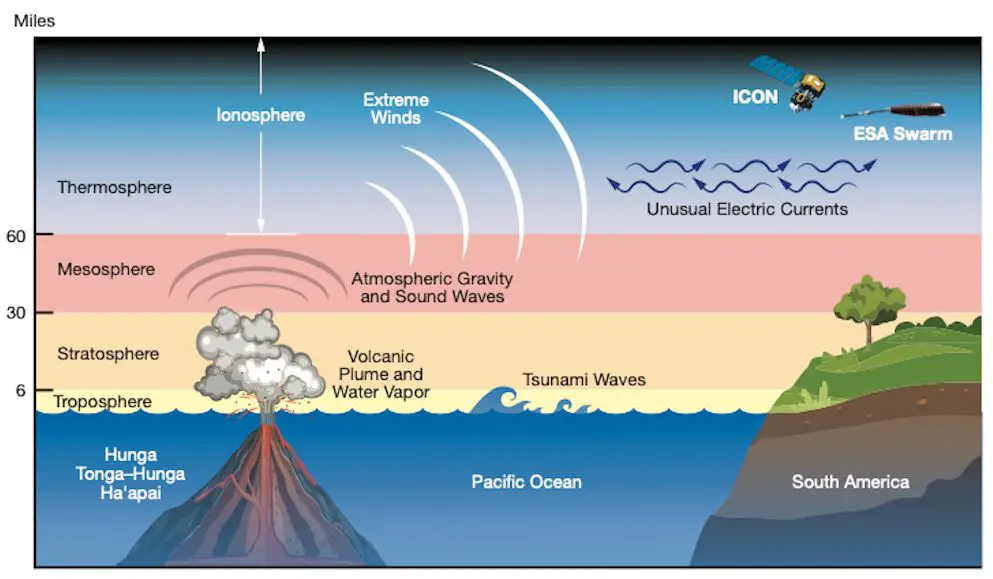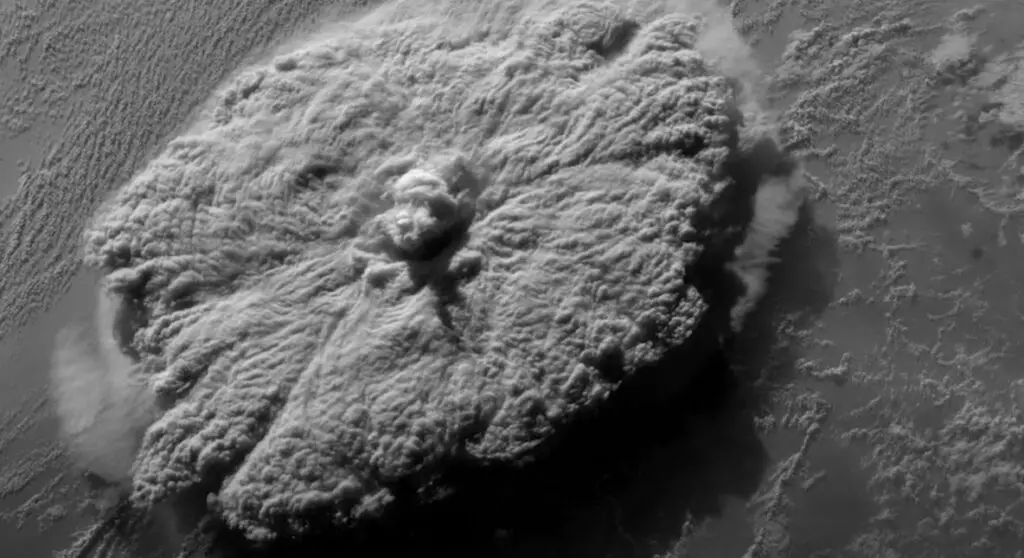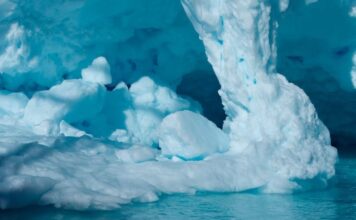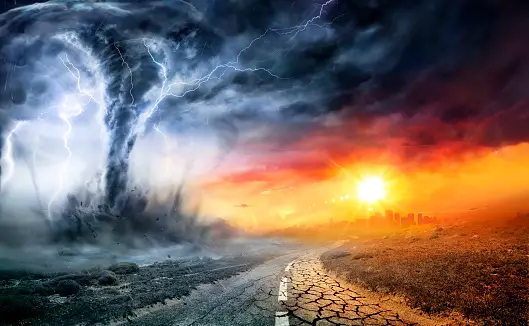In January 2022, the Tonga submarine volcanic rod erupted. In addition to causing a tsunami in the Pacific Ocean, spraying hundreds of millions of tons of volcanic ash into the stratosphere and mesosphere, and releasing shock waves reaching the height of the ionosphere, the latest satellite data also show that the eruption occurred in space. A wind 3 times stronger than a super typhoon blows.
At the beginning of this year, the Hunga Tonga-Hunga Ha’apai volcano, located on the seabed of the South Pacific island country, had a large-scale eruption. The power was equivalent to the detonation of more than 100 atomic bombs at the same time.
Divided into two isolated islands, the powerful pulse also triggered a small but fast-spreading tsunami in the Pacific Ocean, and hundreds of millions of tons of volcanic ash rose to a record 58 kilometers above the ground to reach the mesosphere.

In addition, scientists also recorded a special Lamb wave propagating in the horizontal direction of the earth in the atmospheric waves generated by the explosion, with an amplitude of up to 450 kilometers, which is equivalent to the shock wave caused by a volcanic eruption hitting the ionosphere, and traveled to the ionosphere within 6 days. 4 times around the earth in one direction and 3 times in the other direction, according to historical data, this is the same number of Lamb waves circling the earth as the Krakatoa eruption in 1883.
Eruption Caused a mind-blowing wind speed of 720Kph (450 mph)
Recently, scientists through the NASA ICON satellite and the European Space Agency’s Swarm satellite data further found that these powerful shock waves caused super violent winds at 190 kilometers (120 miles) above the ground, with a wind speed of 720 kilometers per hour, which was 240 kilometers per hour faster than the surface super typhoon. The wind speed in kilometers is also 3 times higher.
Previously, scientists mostly believed that the ionosphere was isolated from the earth to a certain extent and was mainly affected by solar activity. But in fact, the ionospheric disturbance detected by the eruption of the submarine volcano in Tonga is the most important data measured by the ICON satellite for more than 2 years in orbit.
These winds are stronger than any previous disturbance caused by geomagnetic storms, and at the same time. The direction of the current that affects the particles in the ionosphere: originally flowing eastward regularly (called equatorial electrojet), but after the volcanic eruption, the equatorial electrojet peak soars to 5 times normal, and the direction is sharply reversed to briefly westward flow.

(Image credit: NASA/NOAA)
Eruption also Caused Electrical Phenomenon that Disrupts GPS
The eruption was the most powerful since 1991, when the explosion could be heard within 10,000 kilometers; the GOES-17 satellite and Japan’s Sunflower 8 weather satellite also captured images of the eruption.
Intense equatorial electrojets, associated with redistribution of ionospheric material, can disrupt GPS and radio signals transmitted in the region. Continuous tracking of currents and atmospheric winds flowing through the region could help scientists more accurately predict problems caused by such disturbances. The article is published in Geophysical Research Letters that explains the impacts of this eruption.
Wanna deep dive in this topic? Here is some links for you:
Huge Tonga volcanic eruption spawned record-breaking winds at the edge of space
NASA Mission Finds Tonga Volcanic Eruption Effects Reached Space
(Image Source: Nasa)





